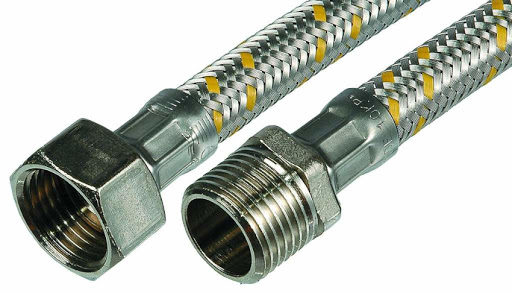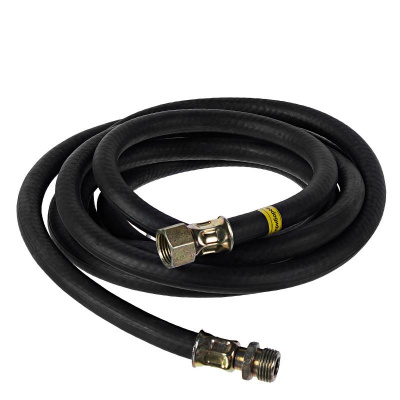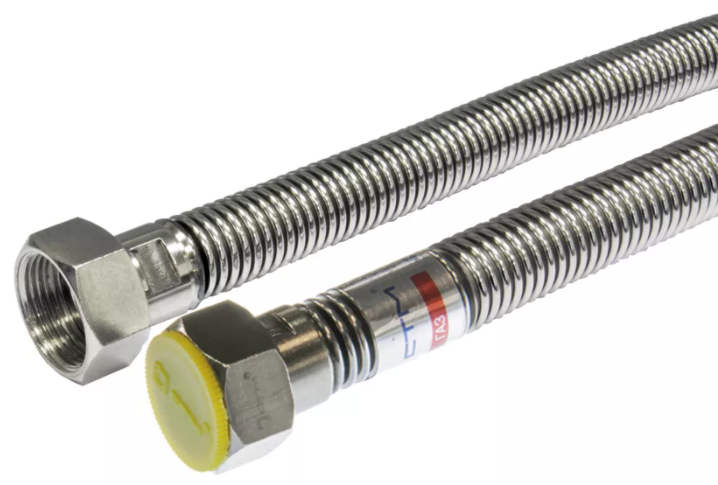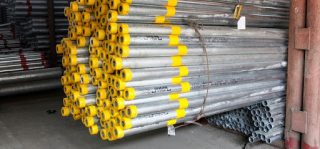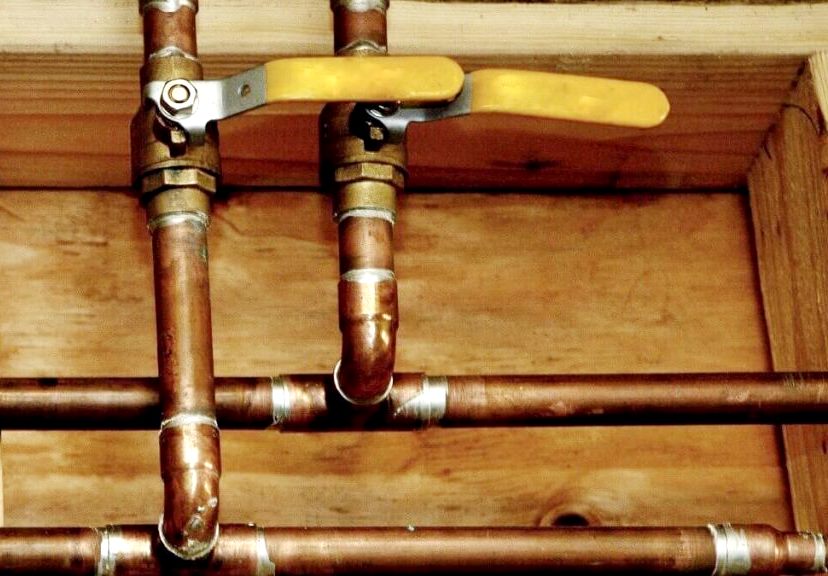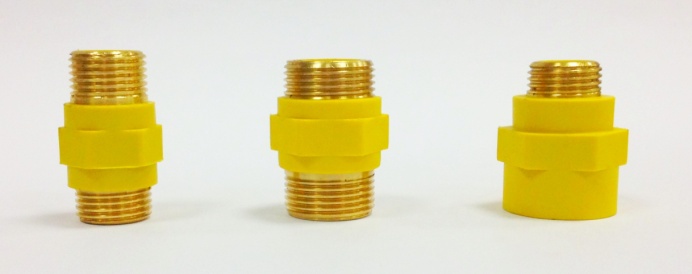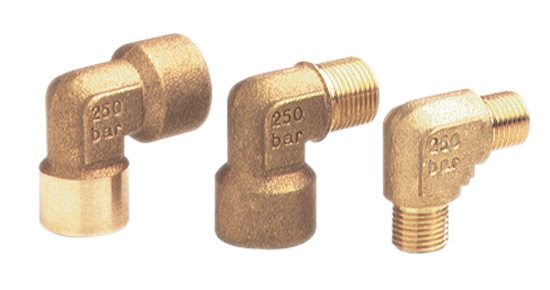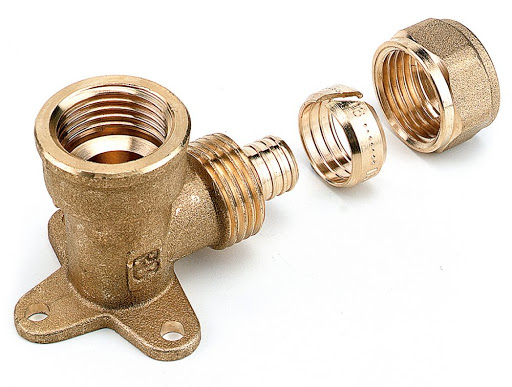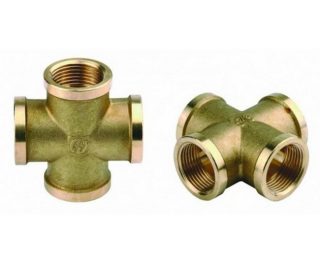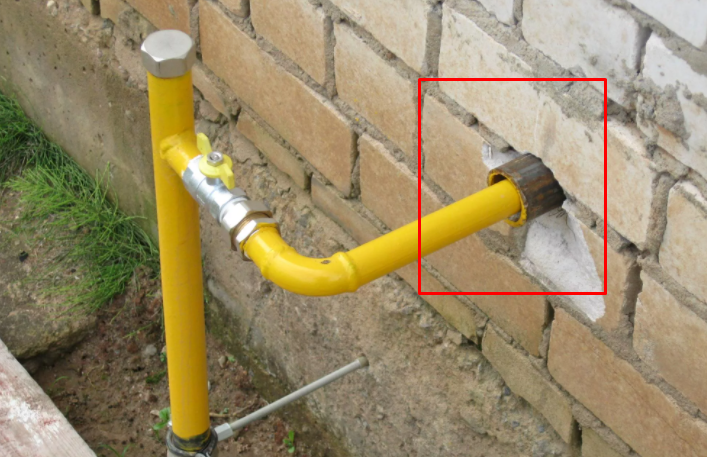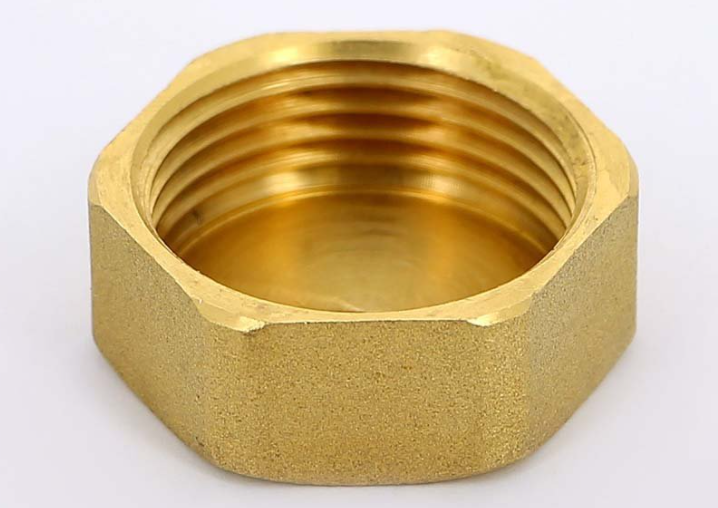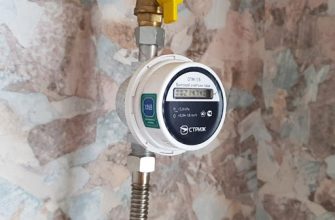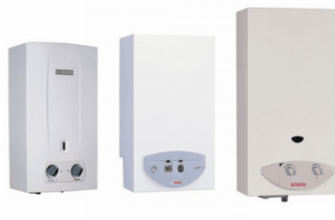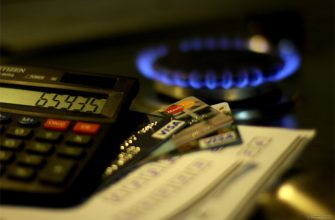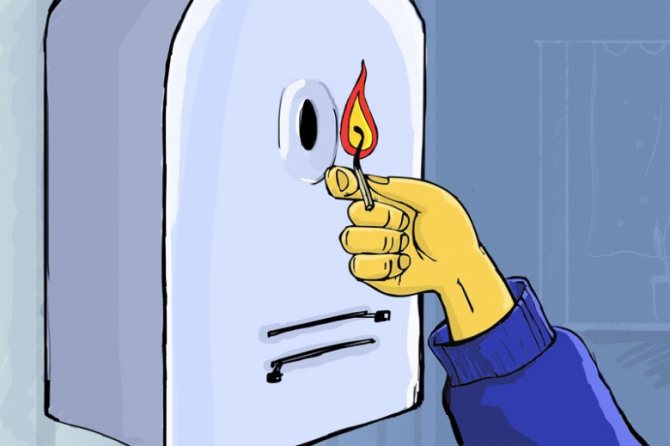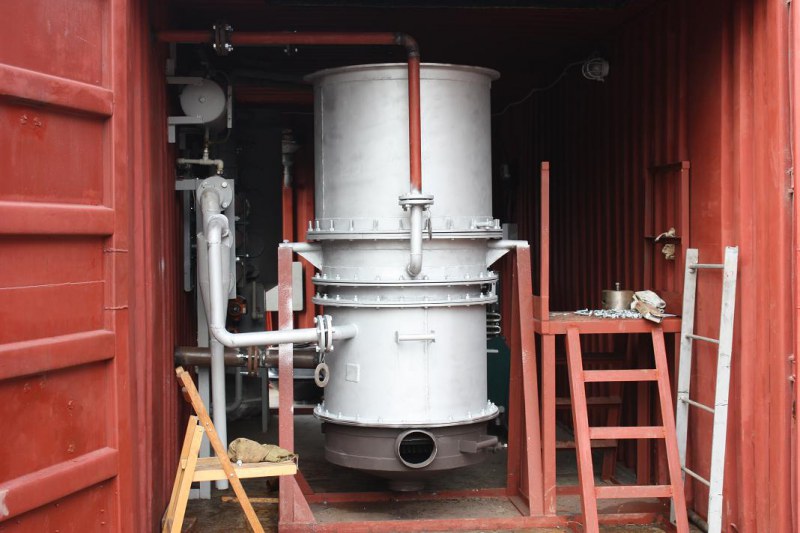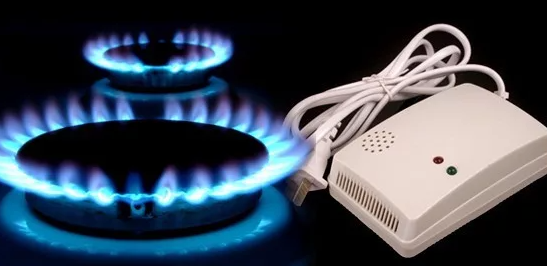There are 2 main requirements for the blue fuel transportation system: fire safety and complete tightness of the joints. In addition, the pressure maintained in the network must be taken into account. Only a few materials satisfy these conditions.
Varieties of gas pipes
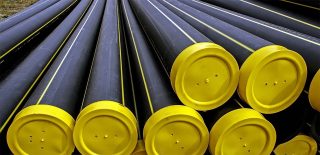
For a long enough time, only steel tubes... This is due to the unique combination of strength and high pressure resistance with relative wall thinness. However, the cost of such a pipeline is high, so the search for an alternative did not stop.
Today for main pipes according to GOST are still used only iron alloys... And for distribution, and especially house networks apply other materials.
Plastic
The best option for a gas pipeline is low-pressure polyethylene... Such material is much more resistant to mechanical damage and is able to withstand the high pressure of natural gas. Allowed to apply polypropylene and polyvinyl chloride... They are used much less often, as they have a lot of disadvantages. The PVC pipe is not resistant to ultraviolet radiation and is suitable for laying only underground utilities.
Apply and metal-plastic. Such products are reinforced with aluminum foil or mesh. This layer is located between the polymer layers and does not come into contact with air. Reinforcement gives the product great strength, reduces the coefficient of thermal expansion. Such a pipe retains its geometric dimensions. In addition, polyethylene is permeable to gases. Aluminum foil prevents methane or propane leakage even in minimal doses.
If you reinforce polyethylene pipes, they lose flexibility, and this complicates installation. However, the smaller the diameter, the easier it is to bend the pipe. This eliminates the need for multiple connections.
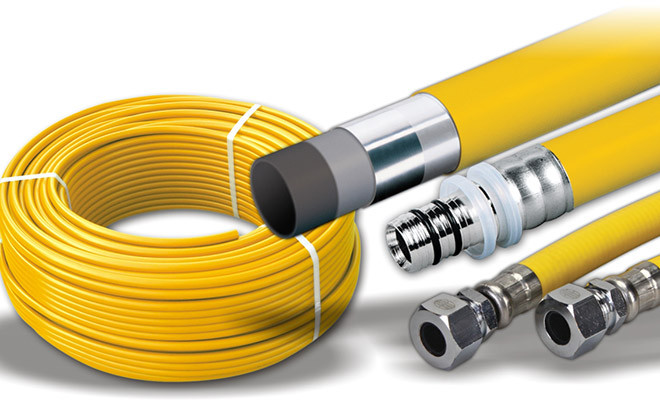
The polymer for the gas pipeline is selected taking into account the wall thickness - the pressure resistance depends on it. Produce brand products PE100 +, PE100, PE80 PE63... A gas pipeline with an indicator of 100+ can withstand a pressure of 1.6 MPa.
Pipes with a diameter of less than 180 mm are sold in coils, with a large cross-section - in pieces 6 or 12 m long. Gas pipes are marked in color: black with yellow stripe or yellow.
Gas hoses
Sometimes the unfortunate location of the gas equipment and the external system does not allow the development of a simple indoor scheme. In such cases, flexible gas hoses with a length of up to 3 m... They allow you to connect a stove or a boiler without cluttering the room with pipes.
Use 3 options.
- Metal braided rubber hose - occurs most often. Usually used in the kitchen and bathroom. It attracts with its high strength and durability.
- Rubber fabric - less resistant to mechanical damage, it cannot be fixed rigidly. However, such a product does not conduct electric current at all. No dielectric is needed for the gas hose.
- Bellows gas hose - corrugated stainless steel pipe with a plastic sheath and with two fittings for connection. The bellows is practically eternal, since the stainless steel is absolutely resistant to corrosion, withstands pressure up to 6 atm.
When installing the bellows hose, a dielectric gas insert is used. It prevents the passage of electric current.
Metallic
The main selection parameters are the wall thickness and the diameter of the gas pipe. The norms are as follows:
- diameter products for in-house network should be not less than 25 mm;
- gas pipeline section for distribution network - not less than 50 mm;
- Wall thickness at the pipes for aboveground installation is not less than 2 mm;
- wall thickness for underground communications - not less than 3 mm.
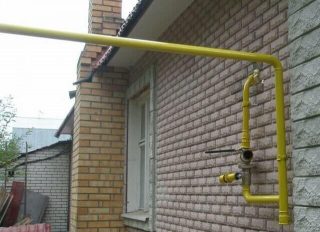
The advantages and disadvantages of a metal gas pipeline are due to the parameters of the material. High strength provides durability, but it also makes installation quite difficult. Bend fragments can only at a slight angle... When rotated 90 degrees, the product must be cut and then joined by welding. Straight segments can be threaded to each other.
Steel is prone to corrosion, so that the pipeline must be painted and repainted periodically.
Underground communications are difficult to operate. Metal contact with earth and water provides the appearance and passage of an electric current, which significantly accelerates corrosion. When installing, use dielectric clutch to the gas pipe, and the pipeline itself must be equipped with electrical protection.
Recently, for the house network, they often use copper pipes... The material attracts with its corrosion resistance and exceptional durability... In addition, they are very beautiful, and in the kitchen they can even serve as a decorative element. This option is expensive, but does not need electrical protection.
Consumables and equipment required
To connect the pipeline to equipment or to connect different sections of the network to each other, you need connecting elements... Products for plastic, metal-plastic and steel pipes are produced. There are also universal and transition connectors that allow you to join products from different materials.
There are several main classes.
- Couplings and adapters - fittings used to connect straight sections and extend the gas pipeline. Also used to connect pipelines to taps or other equipment. A steel gas pipeline is installed dielectric gas clutch - it prevents the passage of electric current and increases the service life. Adapters, unlike couplings, have different diameters at opposite ends. Elements are used for joining pipes with different cross-sections.
- Corners and bends - connectors that allow you to change the direction of the line. Required when bending is not possible. Connection by soldering, welding, screwing onto the thread is allowed.
- Water socket - a special, mostly decorative element designed to connect pipes located inside the wall. This is a kind of external line exit. Water sockets are made of bronze and brass.
- Tees and crosses - parts that connect not 2, but 3 or even 4 pipes. Used when organizing wiring for several rooms.
- Liners - resemble a short section of a metal pipeline. The sleeve is needed when a gas pipeline passes through a wall or ceiling of a private house or apartment. It protects the net against wall shrinkage.
- Plugs - this part closes the pipeline branch. This kind of fitting should not be confused with a temporary plug, which is installed during repairs.
Components for pipes are made of materials similar in properties to the material of the pipeline.For a steel product, fittings are made of cast iron, steel or brass for welding or threading. For plastic pipes, connecting elements made of the same material are used; for metal-plastic pipes, fittings are made of cryoplastic and metal-plastic.
Rules and features of gas pipeline installation
Only special services staff... Self-connection or installation is strictly prohibited. In addition, it is necessary to draw up and approve a gasification project in advance.
Building codes
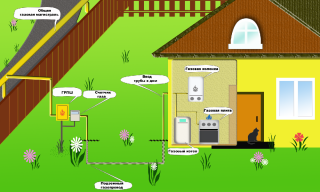
When drawing up the project, when choosing a place for a boiler or stove, you need to remember that gas pipes are laid in compliance with SNiP standards... The provisions are as follows:
- it is forbidden to lay a gas pipeline under a window or doorway, as well as under a ventilation line;
- a distance of 50 cm must be maintained from the pipe to the electrical panel;
- there must be a distance of at least 25 cm between the gas line and any electrical communications;
- the gas pipeline is attached to the wall at a distance of 22 cm from the floor, with sloped ceilings - by 20 cm;
- the equipment can be connected using a flexible hose with a cross section of 10 mm;
- it is forbidden to put water heaters in the bathroom;
- the distance between the stove and the pipe must be less than 80 cm;
- the gas meter is mounted at a height of 160 cm from the floor and at a distance of 80 cm from the boiler or stove;
- separate holes are made for the gas pipe and ventilation in the wall;
- the line is mounted at an angle of 3% from the gas meter to the equipment.
Access to communications must be open. Even if they are hidden in a box, the latter must be removable.
Outside pipeline
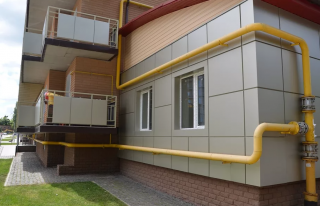
The gas network almost always fits underground. This option eliminates mechanical damage, gas leakage, and reduces the danger to the environment. In some cases, overhead laying is allowed to the walls of buildings, as well as on certain sections of the route. The height of the aboveground gas pipeline is determined by the technical specifications.
Placement in collectors, tunnels and channels is not allowed. The only exceptions are networks on the territory of industrial enterprises with a pressure of 0.6 MPa.
Everything connections must be welded, with the exception of joining metal and plastic pipes. At the point of entry and exit of the gas pipeline from the ground, as well as when passing through the walls of the building, it is placed in a case. It is preferable to enter the gas pipeline immediately into the room where the main gas equipment is installed.
In front of the gearboxes, in front of the entrance to buildings, on branches and other areas, disconnecting devices must be installed.
Home gas consumption network
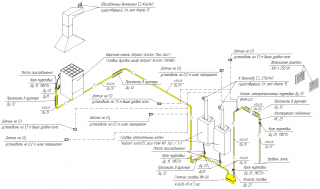
Intra-house networks are designed for pressure from 0.3 to 0.6 MPa. Plastic options are much more often used here, since they are cheaper and allow you to equip the system without transition elements. Additional restrictions on the internal network are as follows:
- installation of a gas meter is required;
- only 2- or 4-burner models are installed in the dwelling, corresponding to GOST;
- a water heater, as well as other air heating devices - a boiler, a boiler, must be equipped with an automatic device to turn off the gas supply in the event of a critical drop in pressure.
Gas pipes are allowed to be hidden in grooves, but only if they are covered by removable panels.

Crimping
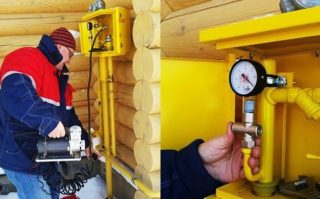
Before the delivery of the finished gas line, control works are carried out - crimping... The same procedure is performed during a scheduled system check.
Pressure testing is carried out only by specialists and only after control testing and inspection of gas equipment. The essence of the procedure is as follows: into the system after installing special plugs pump air under pressure and inspect pipes, seams, connections... If the tightness is broken, air is released in this place and it can be detected. The revealed defects are eliminated and pressure testing is repeated.
Commissioning works
The procedure is performed after pressure testing and equipment testing. It includes:
- adjustment of equipment;
- testing of automatic control devices and safety systems;
- thermal insulation of structures and auxiliary equipment;
- determination of the best operating mode.
Test run performed using reserve gas or main gas. When starting the gas, it is necessary to blow the pipes through the holes in the burners to completely displace the air. Check the system for leaks. Then the work of the pressure gauges is tested and the draft of the gas boiler is reacted. Before firing up, the furnace and gas ducts are ventilated. If during ignition there is a breakthrough or separation of the flame, the gas supply is stopped, the burners, furnace and gas ducts are blown again, and the ignition is repeated.

